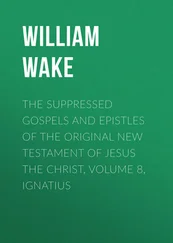Ignatius Donnelly - Antediluvian world
Здесь есть возможность читать онлайн «Ignatius Donnelly - Antediluvian world» весь текст электронной книги совершенно бесплатно (целиком полную версию без сокращений). В некоторых случаях можно слушать аудио, скачать через торрент в формате fb2 и присутствует краткое содержание. Жанр: Старинная литература, на русском языке. Описание произведения, (предисловие) а так же отзывы посетителей доступны на портале библиотеки ЛибКат.
- Название:Antediluvian world
- Автор:
- Жанр:
- Год:неизвестен
- ISBN:нет данных
- Рейтинг книги:5 / 5. Голосов: 1
-
Избранное:Добавить в избранное
- Отзывы:
-
Ваша оценка:
- 100
- 1
- 2
- 3
- 4
- 5
Antediluvian world: краткое содержание, описание и аннотация
Предлагаем к чтению аннотацию, описание, краткое содержание или предисловие (зависит от того, что написал сам автор книги «Antediluvian world»). Если вы не нашли необходимую информацию о книге — напишите в комментариях, мы постараемся отыскать её.
Antediluvian world — читать онлайн бесплатно полную книгу (весь текст) целиком
Ниже представлен текст книги, разбитый по страницам. Система сохранения места последней прочитанной страницы, позволяет с удобством читать онлайн бесплатно книгу «Antediluvian world», без необходимости каждый раз заново искать на чём Вы остановились. Поставьте закладку, и сможете в любой момент перейти на страницу, на которой закончили чтение.
Интервал:
Закладка:
Nor is there wanting a great catastrophe which destroys the whole Adite nation, except a very few who escape because they had renounced idolatry. A black cloud assails their country, from which proceeds a terrible hurricane (the water-spout?) which sweeps away everything.
The first Adites were followed by a second Adite race; probably the colonists who had escaped the Deluge. The centre of its power was the country of Sheba proper. This empire endured for a thousand years. The Adites are represented upon the Egyptian monuments as very much like the Egyptians themselves; in other words, they were a red or sunburnt race: their great temples were pyramidal, surmounted by buildings. (“Ancient History of the East,” p. 321.) “The Sabaeans,” says Agatharchides (“De Mari Erythraeo,” p. 102), “have in their houses an incredible number of vases, and utensils of all sorts, of gold and silver, beds and tripods of silver, and all the furniture of astonishing richness. Their buildings have porticos with columns sheathed with gold, or surmounted by capitals of silver. On the friezes, ornaments, and the framework of the doors they place plates of gold incrusted with precious stones.”
All this reminds one of the descriptions given by the Spaniards of the temples of the sun in Peru.
The Adites worshipped the gods of the Phoenicians under names but slightly changed; “their religion was especially solar… It was originally a religion without images, without idolatry, and without a priesthood.” (Ibid., p. 325.) They “worshipped the sun from the tops of pyramids.” (Ibid.) They believed in the immortality of the soul.
In all these things we see resemblances to the Atlanteans.
The great Ethiopian or Cushite Empire, which in the earliest ages prevailed, as Mr. Rawlinson says, “from the Caucasus to the Indian Ocean, from the shores of the Mediterranean to the mouth of the Ganges,”
was the empire of Dionysos, the empire of “Ad,” the empire of Atlantis.
El Eldrisi called the language spoken to this day by the Arabs of Mahrah, in Eastern Arabia, “the language of the people of Ad,” and Dr.
J. H. Carter, in the Bombay Journal of July, 1847, says, “It is the softest and sweetest language I have ever heard.” It would be interesting to compare this primitive tongue with the languages of Central America.
The god Thoth of the Egyptians, who was the god of a foreign country, and who invented letters, was called At-hothes.
We turn now to another ancient race, the Indo-European family—the Aryan race.
In Sanscrit Adim, means first. Among the Hindoos the first man was Ad-ima, his wife was Heva. They dwelt upon an island, said to be Ceylon; they left the island and reached the main-land, when, by a great convulsion of nature, their communication with the parent land was forever cut off. (See “Bible in India.”) Here we seem to have a recollection of the destruction of Atlantis.
Mr. Bryant says, “Ad and Ada signify the first.” The Persians called the first man “Ad-amah.” “Adon” was one of the names of the Supreme God of the Phoenicians; from it was derived the name of the Greek god “Ad-onis.” The Arv-ad of Genesis was the Ar-Ad of the Cushites; it is now known as Ru-Ad. It is a series of connected cities twelve miles in length, along the coast, full of the most massive and gigantic ruins.
Sir William Jones gives the tradition of the Persians as to the earliest ages. He says: “Moshan assures us that in the opinion of the best informed Persians the first monarch of Iran, and of the whole earth, was Mashab-Ad; that he received from the Creator, and promulgated among men a sacred book, in a heavenly language, to which the Mussulman author gives the Arabic title of ‘Desatir,’ or ‘Regulations.’ Mashab-Ad was, in the opinion of the ancient Persians, the person left at the end of the last great cycle, and consequently the father of the present world. He and his wife having survived the former cycle, were blessed with a numerous progeny; he planted gardens, invented ornaments, forged weapons, taught men to take the fleece from sheep and make clothing; he built cities, constructed palaces, fortified towns, and introduced arts and commerce.”
We have already seen that the primal gods of this people are identical with the gods of the Greek mythology, and were originally kings of Atlantis. But it seems that these ancient divinities are grouped together as “the Aditya;” and in this name “Ad-itya” we find a strong likeness to the Semitic “Adites,” and another reminiscence of Atlantis, or Adlantis. In corroboration of this view we find, 1. The gods who are grouped together as the Aditya are the most ancient in the Hindoo mythology.
2. They are all gods of light, or solar gods. (Whitney’s Oriental and Linguistic Studies,” p. 39.)
3. There are twelve of them. (Ibid.)
4. These twelve gods presided over twelve months in the year.
5. They are a dim recollection of a very remote past. Says Whitney, “It seems as if here was an attempt on the part of the Indian religion to take a new development in a moral direction, which a change in the character and circumstances of the people has caused to fail in the midst, and fall back again into forgetfulness, while yet half finished and indistinct.” (Ibid.)
6. These gods are called “the sons of Aditi,” just as in the Bible we have allusions to “the sons of Adab,” who were the first metallurgists and musicians. “Aditi is not a goddess. She is addressed as a queen’s daughter, she of fair children.”
7. The Aditya “are elevated above all imperfections; they do not sleep or wink.” The Greeks represented their gods as equally wakeful and omniscient. “Their character is all truth; they hate and punish guilt.”
We have seen the same traits ascribed by the Greeks to the Atlantean kings.
8. The sun is sometimes addressed as an Aditya.
9. Among the Aditya is Varuna, the equivalent of Uranos, whose identification with Atlantis I have shown. In the vedas Varuna is “the god of the ocean.”
10. The Aditya represent an earlier and purer form of religion: “While in hymns to the other deities long: life, wealth, power, are the objects commonly prayed for, of the Aditya is craved purity, forgiveness of sin, freedom from guilt, and repentance.” (“Oriental and Linguistic Studies,”
43.)
11. The Aditya, like the Adites, are identified with the doctrine of the immortality of the soul. Yama is the god of the abode beyond the grave.
In the Persian story he appears as Yima, and “is made ruler of the golden age and founder of the Paradise.” (Ibid., p. 45.) (See “Zamna,”
167 ante.)
In view of all these facts, one cannot doubt that the legends of the “sons of Ad,” “the Adites,” and “the Aditya,” all refer to Atlantis.
Mr. George Smith, in the Chaldean account of the Creation (p. 78), deciphered from the Babylonian tablets, shows that there was an original race of men at the beginning of Chaldean history, a dark race, the Zalmat-qaqadi, who were called Ad-mi, or Ad-ami; they were the race “who had fallen,” and were contradistinguished from “the Sarku, or light race.” The “fall” probably refers to their destruction by a deluge, in consequence of their moral degradation and the indignation of the gods.
The name Adam is used in these legends, but as the name of a race, not of a man.
Genesis (chap. v., 2) distinctly says that God created man male and female, and “called their name Adam.” That is to say, the people were the Ad-ami, the people of “Ad,” or Atlantis. “The author of the Book of Genesis,” says M. Schoebel, “in speaking of the men who were swallowed up by the Deluge, always describes them as ‘Haadam,’ ‘Adamite humanity.’” The race of Cain lived and multiplied far away from the land of Seth; in other words, far from the land destroyed by the Deluge.
Читать дальшеИнтервал:
Закладка:
Похожие книги на «Antediluvian world»
Представляем Вашему вниманию похожие книги на «Antediluvian world» списком для выбора. Мы отобрали схожую по названию и смыслу литературу в надежде предоставить читателям больше вариантов отыскать новые, интересные, ещё непрочитанные произведения.
Обсуждение, отзывы о книге «Antediluvian world» и просто собственные мнения читателей. Оставьте ваши комментарии, напишите, что Вы думаете о произведении, его смысле или главных героях. Укажите что конкретно понравилось, а что нет, и почему Вы так считаете.












